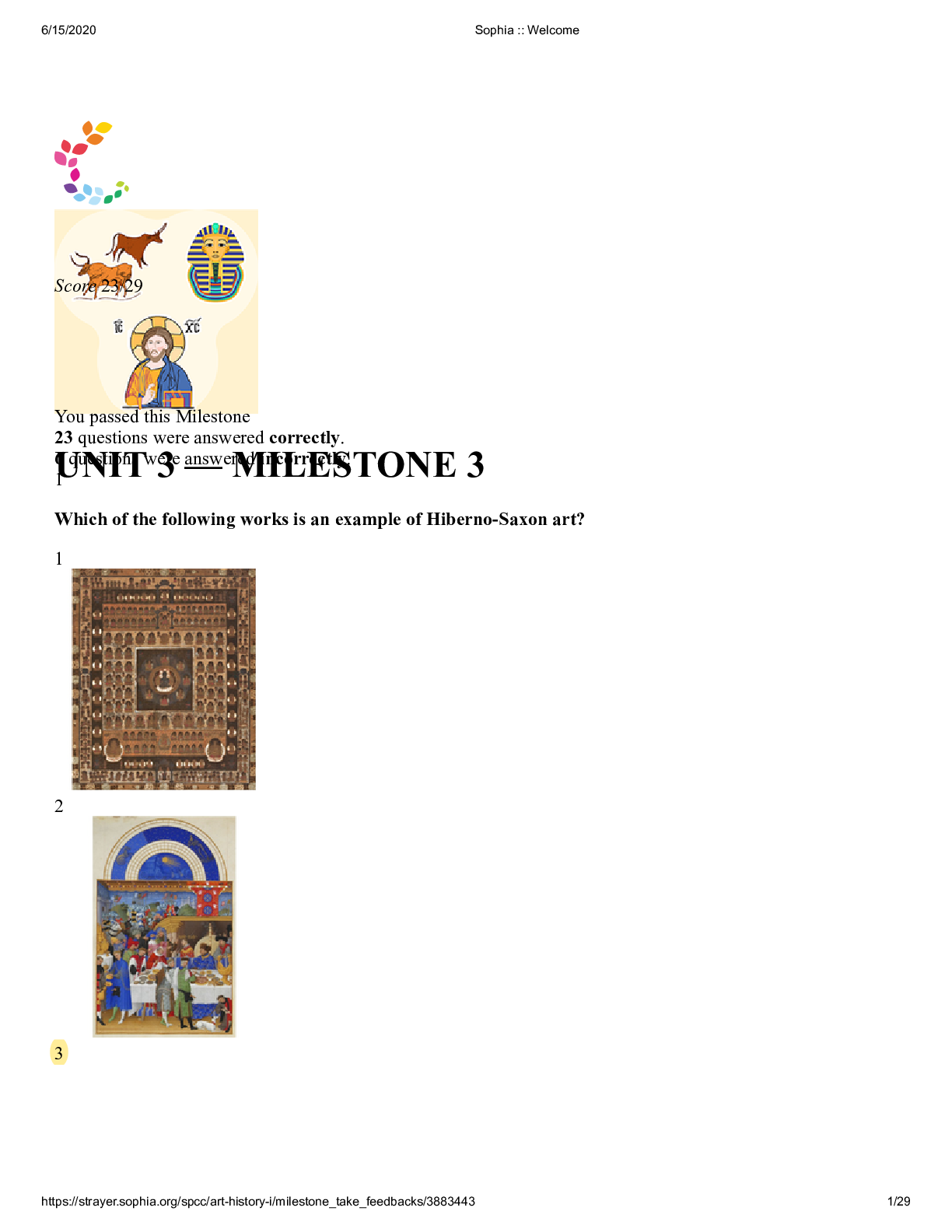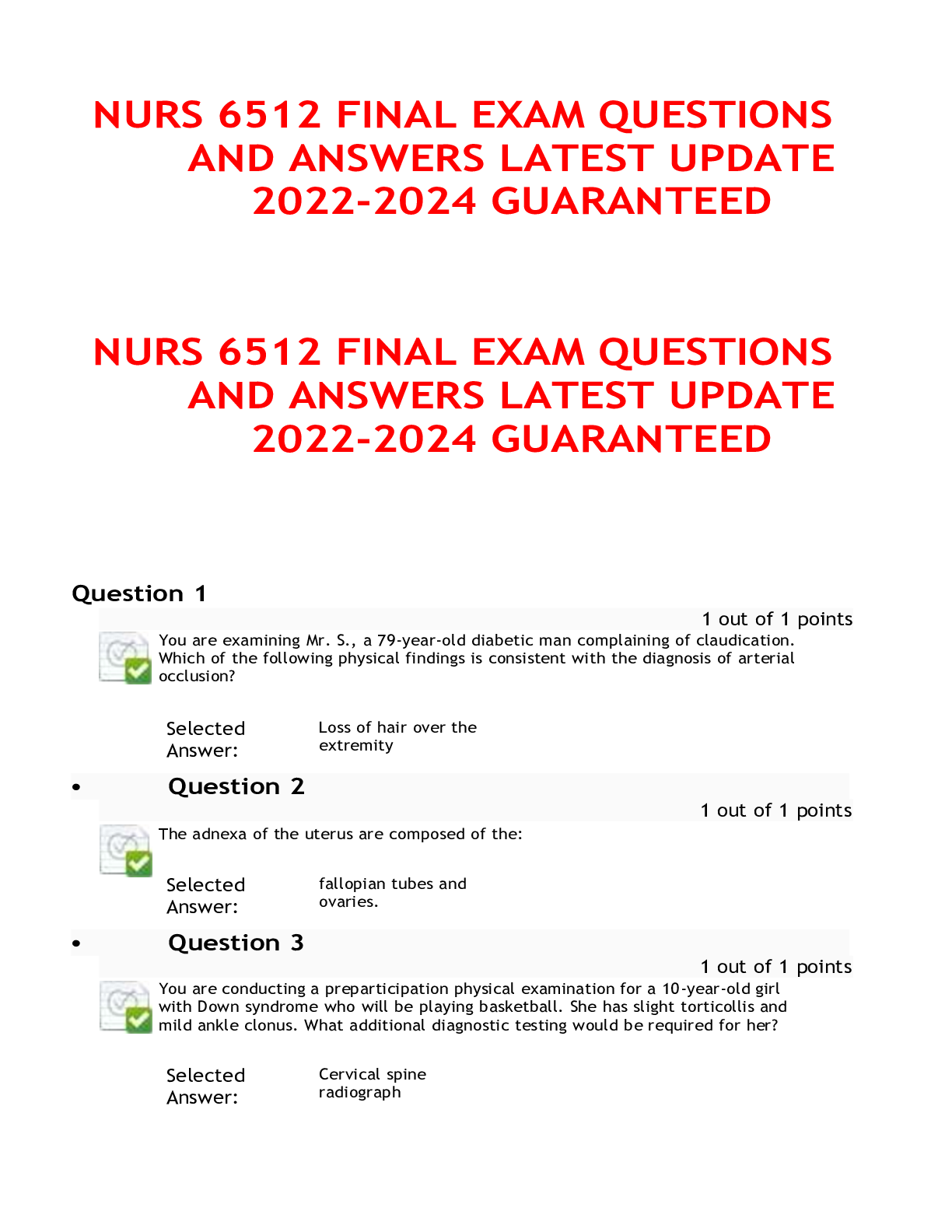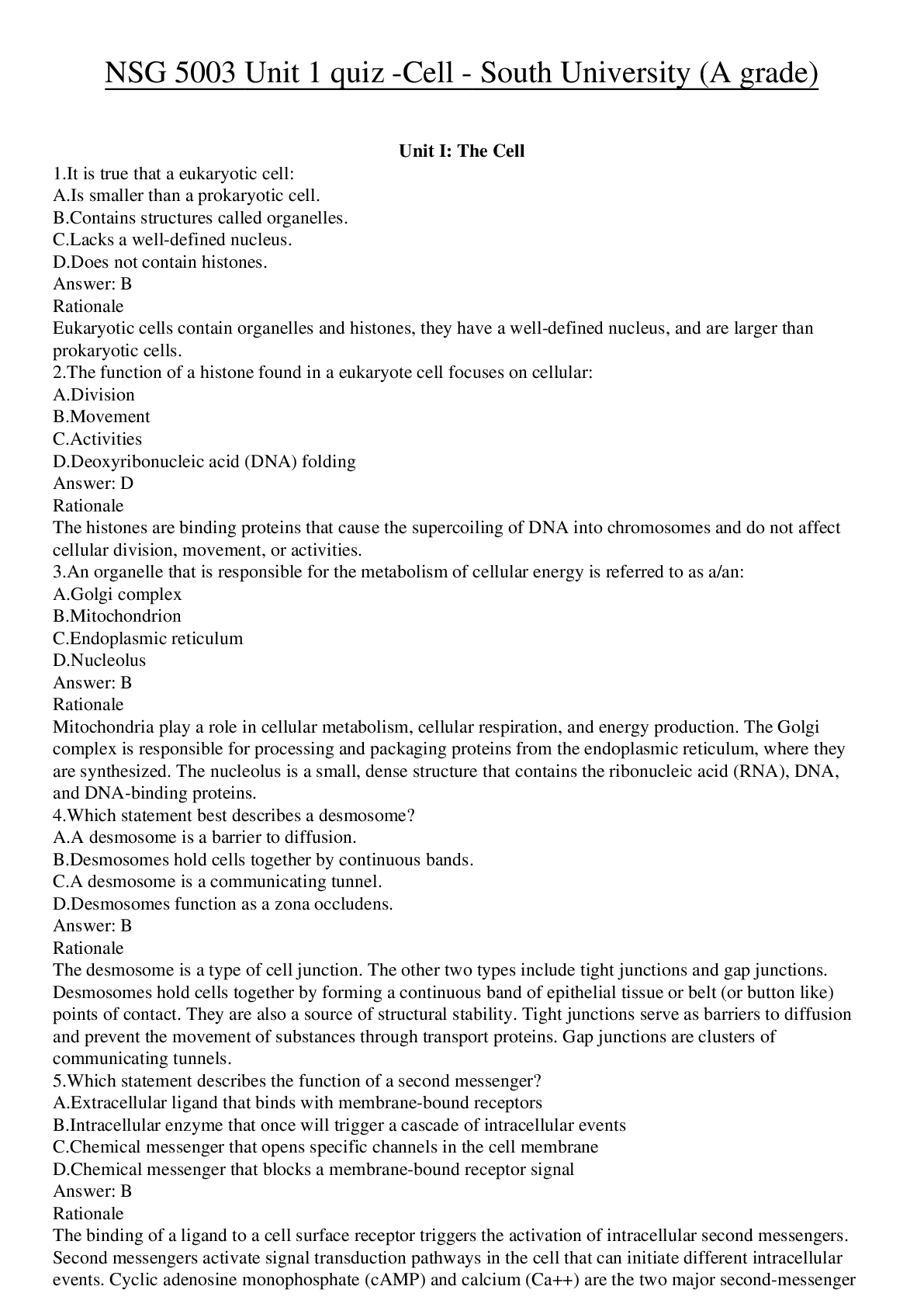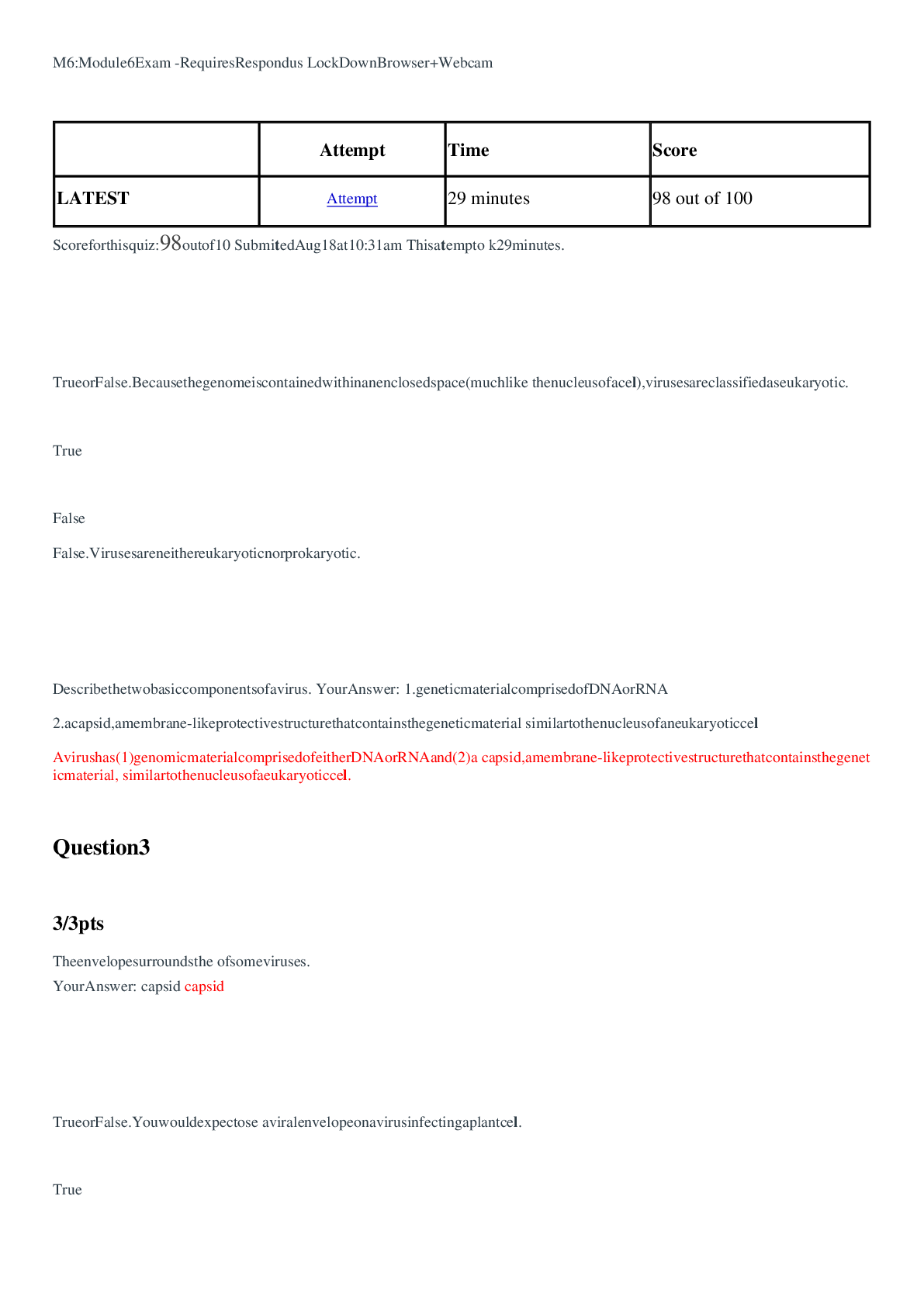Psychology > EXAM > PSY 7712 Unit 1 Quiz (GRADED A) Questions and Answers- Capella University (All)
PSY 7712 Unit 1 Quiz (GRADED A) Questions and Answers- Capella University
Document Content and Description Below
PSY 7712 Unit 1 Quiz • Question 1 4 out of 4 points Challenging behavior can produce both short-term and long-term negative outcomes for: Selected Answer: d. All of the o... ther answers are correct. Answers: a. The student who engages in the challenging behavior. b. Peers and educators of the student. c. Family members of the student. d. All of the other answers are correct. Answer Feedback: Correct. • Question 2 5 out of 5 points Diego's BCBA is conducting a home visit to determine why he is having tantrums at home and not during therapy. Diego is a 4-year-old boy with moderate severity ASD. After two separate observations, it was found that 92% of Diego's tantrums were maintained by escape from non-preferred tasks and activities. For instance, if Diego's mom asked him to pick up his toys or brush his teeth, he would engage in a tantrum and his mother would no longer require him to complete the task. Based on this information, which (if any) of the following interventions is appropriate for addressing Diego's tantrums? Selected Answer: c. The BCBA should teach Diego's mom how to provide Diego with a reinforcing stimulus each time he completes a non-preferred task without having a tantrum. Answers: a. The BCBA should have Diego's mom reprimand him each time he has a tantrum. b. The BCBA should recommend that Diego's mom have him wear a weighted vest to prevent his tantrums from occurring. c. The BCBA should teach Diego's mom how to provide Diego with a reinforcing stimulus each time he completes a non-preferred task without having a tantrum. d. None of the other answers is correct. Answer Feedback: Correct. • Question 3 0 out of 5 points Early problems or trauma experienced as a child are often suggested as the original causes of, or influences on, a student's challenging behavior. Which statement is most accurate? Selected Answer: a. There may be useful information gained from investigating such historical factors. For example, one may learn that the child has a great fear of dogs, loud noises (for example, thunder or jets), and lightning. This information can guide the preparation of related interventions. Answers: a. There may be useful information gained from investigating such historical factors. For example, one may learn that the child has a great fear of dogs, loud noises (for example, thunder or jets), and lightning. This information can guide the preparation of related interventions. b. The primary question in determining intervention is, "What are the current influences on behavior, and how can they be altered in order to change behavior?" c. The original conditions that led to the acquisition of the challenging behavior probably are not the conditions that maintain it today. d. All of the other answers are correct. Answer Feedback : Incorrect. This is true, however one or more other responses is also correct. • Question 4 Educational teams should: 5 out of 5 points Selected Answer: c. Attend to disruptive or dangerous behaviors as well as more mild challenging behaviors that have a negative effect on learning and development. Answers: a. Focus only on disruptive or dangerous types of challenging behavior, specifically the topography or the physical features of the behavior. b. Focus only on the severity or intensity of disruptive or dangerous types of challenging behavior. c. Attend to disruptive or dangerous behaviors as well as more mild challenging behaviors that have a negative effect on learning and development. d. None of the other answers is correct. Answer Feedback: Correct. • Question 5 5 out of 5 points Misleading or faulty explanations about the causes of behavior: Selected Answer: c. Often interfere as we try to address challenging behavior. This may occur if we remain focused on blaming the student, other individuals, or family and home situations. If our beliefs about why challenging behavior occurs are misguided or wrong, then the interventions we select will be misguided, and the likelihood is that we will be unsuccessful in changing the challenging behavior. Answers: a. Sometimes yield better understanding about why challenging behavior is occurring now. For example, the team may discover that a rare disorder exists that is associated with challenging behavior (for example, Lesch-Nyhan syndrome). b. Should always be thoroughly examined in order to select therapeutic, non-behavioral interventions for c. Often interfere as we try to address challenging behavior. This may occur if we remain focused on blaming the student, other individuals, or family and home situations. If our beliefs about why challenging behavior occurs are misguided or wrong, then the interventions we select will be misguided, and the likelihood is that we will be unsuccessful in changing the challenging behavior. d. All of the other answers are correct. Answer Feedback : Correct. • Question 6 Private events: Selected Answer: 5 out of 5 points a. Have the same physical status as public events. Answers: a. Have the same physical status as public events. b. Are anything an organism does, including covert actions like thinking. c. Are behaviors that produce aversive or punishing outcomes. d. Are not considered behavior. Answer Feedback: Correct. • Question 7 5 out of 5 points The functional assessment and intervention model is built on a core set of assumptions concerning the development and maintenance of both appropriate and challenging behaviors. These assumptions guide the identification of the supports for challenging behavior and the interventions that are developed to address challenging behavior. Which of the following are core assumptions? Selected Answer: d. All of the other answers are correct. Answers: a. Challenging behavior and appropriate behavior are supported by the current environment. Behavior serves a function. b. Challenging behavior can be changed using positive interventions that address the function of the behavior. c. Functional assessment should be a team-based process. d. All of the other answers are correct. Answer Feedback: Correct. • Question 8 5 out of 5 points This is anything an organism does, including covert actions like thinking: Selected Answer: c. Behavior. Answers: a. Applied behavior analysis. b. Shaping. c. Behavior. d. All of the other answers are correct. Answer Feedback: Correct. • Question 9 5 out of 5 points Upon completion of Amber's functional behavior assessment, it was clear that her talk-outs were being maintained by teacher attention. Which (if any) of the following could be a potentially effective strategy to address this behavior? Selected Answer: b. Have the teacher provide reinforcement when Amber raises her hand while not providing any response or attention to Amber's talk-outs. Answers: a. Have the teacher ignore Amber completely. b. Have the teacher provide reinforcement when Amber raises her hand while not providing any response or attention to Amber's talk-outs. c. Have the teacher tell Amber, "I'm not going to address you when you talk out," each time Amber engages in the target behavior. d. None of the above. Answer Feedback: Correct. • Question 10 5 out of 5 points What decision by the educational team will need to be made as to whether a behavior requires functional assessment and intervention? Selected Answer: d. All of the other answers are correct. Answers: a. The team should decide if the student's behavior is challenging. b. The team should recognize that for the student the challenging behavior is in fact very functional and effective; it produces an outcome that is desirable to the student or that meets the needs of the student. c. The team should consider the perspective of those individuals who identify the behavior as challenging. d. All of the other answers are correct. Answer Feedback: Correct. • Question 11 5 out of 5 points What is a way we can determine if biological or medical variables may be affecting a client? Selected Answer: c. Refer the client for a medical evaluation. Answers: a. Conduct a preference assessment. b. Probe their manding skills. c. Refer the client for a medical evaluation. d. All of the other answers are correct. Answer Feedback: Correct. • Question 12 5 out of 5 points Which is an acceptable explanation for when an educator asks you the question, "Why does his challenging behavior occur?" Selected Answer: d. His challenging behavior may be occurring since it serves a purpose for him. He is possibly getting something he wants through his behavior. We can conduct a functional assessment to learn more about the causes for his behavior. Answers: a. His challenging behavior occurs because of his personality and disability. b. His challenging behavior is caused by his family, poor parenting and discipline practices, and unfortunate home circumstances. c. His challenging behavior is a result of previous trauma related to bad experiences where he lived before. d. His challenging behavior may be occurring since it serves a purpose for him. He is possibly getting something he wants through his behavior. We can conduct a functional assessment to learn more about the causes for his behavior. Answer Feedback: Correct. • Question 13 4 out of 4 points Which is an acceptable explanation for when an educator asks you the question, "Why does his challenging behavior occur?" Selected Answer: d. His challenging behavior may be occurring since it serves a purpose for him. He is possibly getting something he wants through his behavior. We can conduct a functional assessment to learn more about the causes for his behavior. Answers: a. His challenging behavior occurs because of his personality and disability. b. His challenging behavior is caused by his family, poor parenting and discipline practices, and unfortunate home circumstances. c. His challenging behavior is a result of previous trauma related to bad experiences where he lived before. d. His challenging behavior may be occurring since it serves a purpose for him. He is possibly getting something he wants through his behavior. We can conduct a functional assessment to learn more about the causes for his behavior. Answer Feedback: Correct. • Question 14 Which is not one of the four phases of intervention? 5 out of 5 points Selected Answer: b. Parsimony. Answers: a. Assessme nt. b. Parsimony. c. Interventio n. d. Planning. Answer Feedback: Correct. • Question 15 4 out of 4 points Which is part of the definition of challenging behavior? Selected Answer: d. All of the above are correct. Answers: a. Behavior that interferes with the student's learning or the learning of other individuals. b. Behavior that hinders positive social interactions and relationships. c. Behavior that harms the student, peers, adults, or family members. d. All of the above are correct. Answer Feedback: Correct. • Question 16 5 out of 5 points Which is true about the functional assessment perspective? Selected Answer: d. All of the other answers are correct. Answers: a. Most behaviors are triggered, strengthened, or weakened by current environmental events. b. Behaviors that produce positive outcomes are strengthened and continue to occur. c. Behaviors that produce aversive or punishing outcomes are weakened and do not continue to occur. d. All of the other answers are correct. Answer Feedback: Correct. • Question 17 5 out of 5 points Which of the following is a biological or medical variable that could affect the client? Selected Answer: d. All of the other answers are correct. Answers: a. Constipation. b. A toothache. c. A chromosomal disorder. d. All of the other answers are correct. Answer Feedback: Correct. • Question 18 Which statement is false? 5 out of 5 points Selected Answer: a. Challenging behaviors have little or no adverse impact on students receiving maximum or optimal benefits from educational placements. Answers: a. Challenging behaviors have little or no adverse impact on students receiving maximum or optimal benefits from educational placements. b. Challenging behavior often is incompatible with engagement and academic learning. c. Students in self-contained special education classes who exhibit challenging behavior are expelled or suspended at higher rates than students in general education. d. Many students with severe and frequent challenging behavior drop out of high school. Answer Feedback: Correct. • Question 19 Which statement is false? 4 out of 4 points Selected Answer: a. Challenging behaviors have little or no adverse impact on students receiving maximum or optimal benefits from educational placements. Answers: a. Challenging behaviors have little or no adverse impact on students receiving maximum or optimal benefits from educational placements. b. Challenging behavior often is incompatible with engagement and academic learning. c. Students in self-contained special education classes who exhibit challenging behavior are expelled or suspended at higher rates than students in general education. d. Many students with severe and frequent challenging behavior drop out of high school. Answer Feedback: Correct. • Question 20 Which statement is true? 4 out of 4 points Selected Answer: d. All of these answers are true. Answers: a. Students who exhibit challenging behavior often are avoided or rejected by peers and have fewer opportunities for successful and fulfilling social relationships. b. Challenging behavior often interferes with the development of positive relationships and interactions with family members. c. Challenging behavior that is not addressed typically will become more severe and frequent with age and may have a negative effect on post-school outcomes (for example, crime, substance abuse, unemployment, referral to state institutions, and psychiatric disorder diagnosis). d. All of these answers are true. Answer Feedback : Correct. • Question 21 5 out of 5 points Why is it important to rule out medical issues before treating problem behaviors? Selected Answer: d. All of the other answers are correct. Answers: a. If biological or medical variables are impacting the behavior, there may be no need for behavior analytic services. b. Underlying medical issues can impact the effectiveness of behavioral intervention. c. Ethically, we need to work within the scope of our competency. If a biological or medical issue is maintaining the behavior, it may be more beneficial for the client to receive other specialized services. d. All of the other answers are correct. Answer Feedback: Correct. [Show More]
Last updated: 1 year ago
Preview 1 out of 22 pages
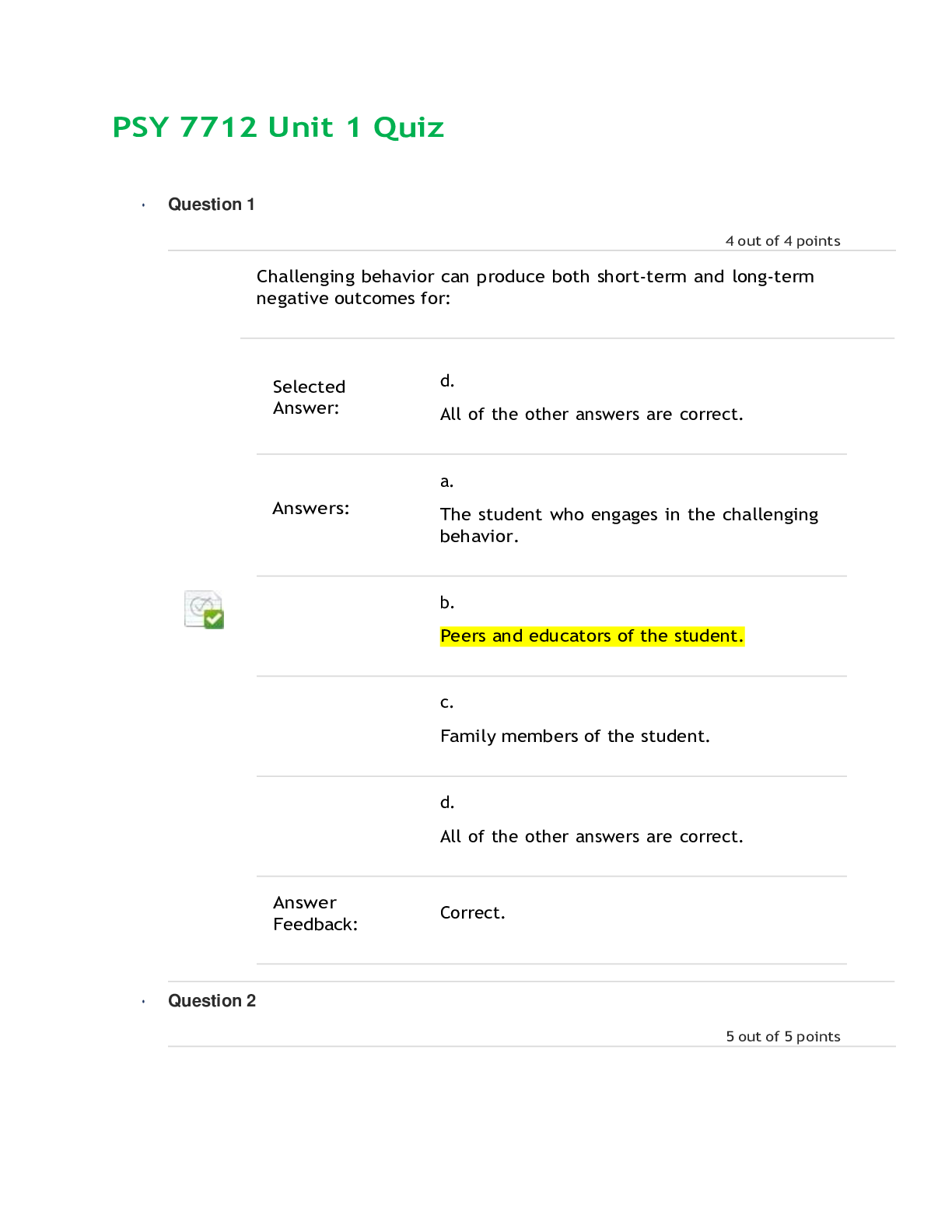
Reviews( 0 )
Document information
Connected school, study & course
About the document
Uploaded On
Aug 08, 2022
Number of pages
22
Written in
Additional information
This document has been written for:
Uploaded
Aug 08, 2022
Downloads
0
Views
44




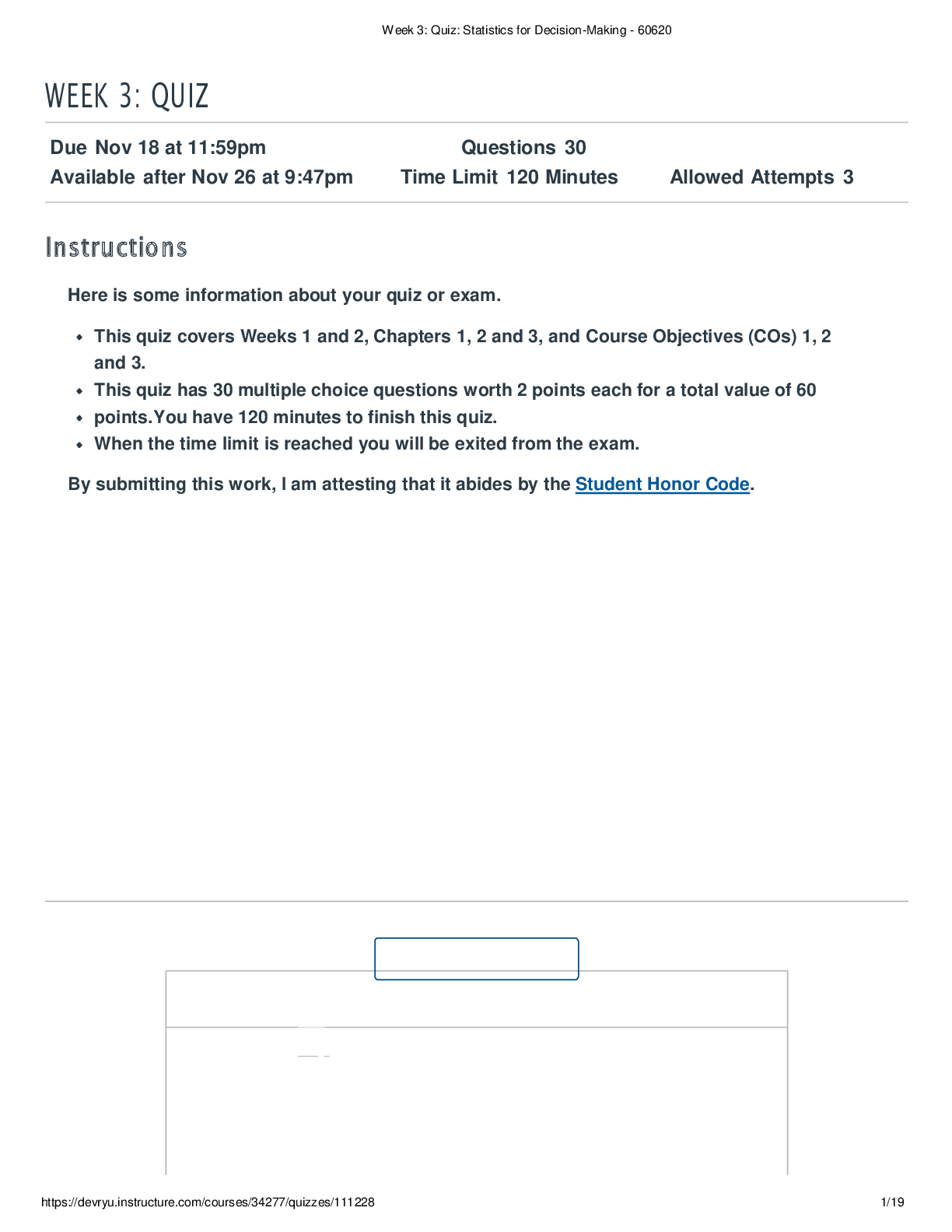

.png)










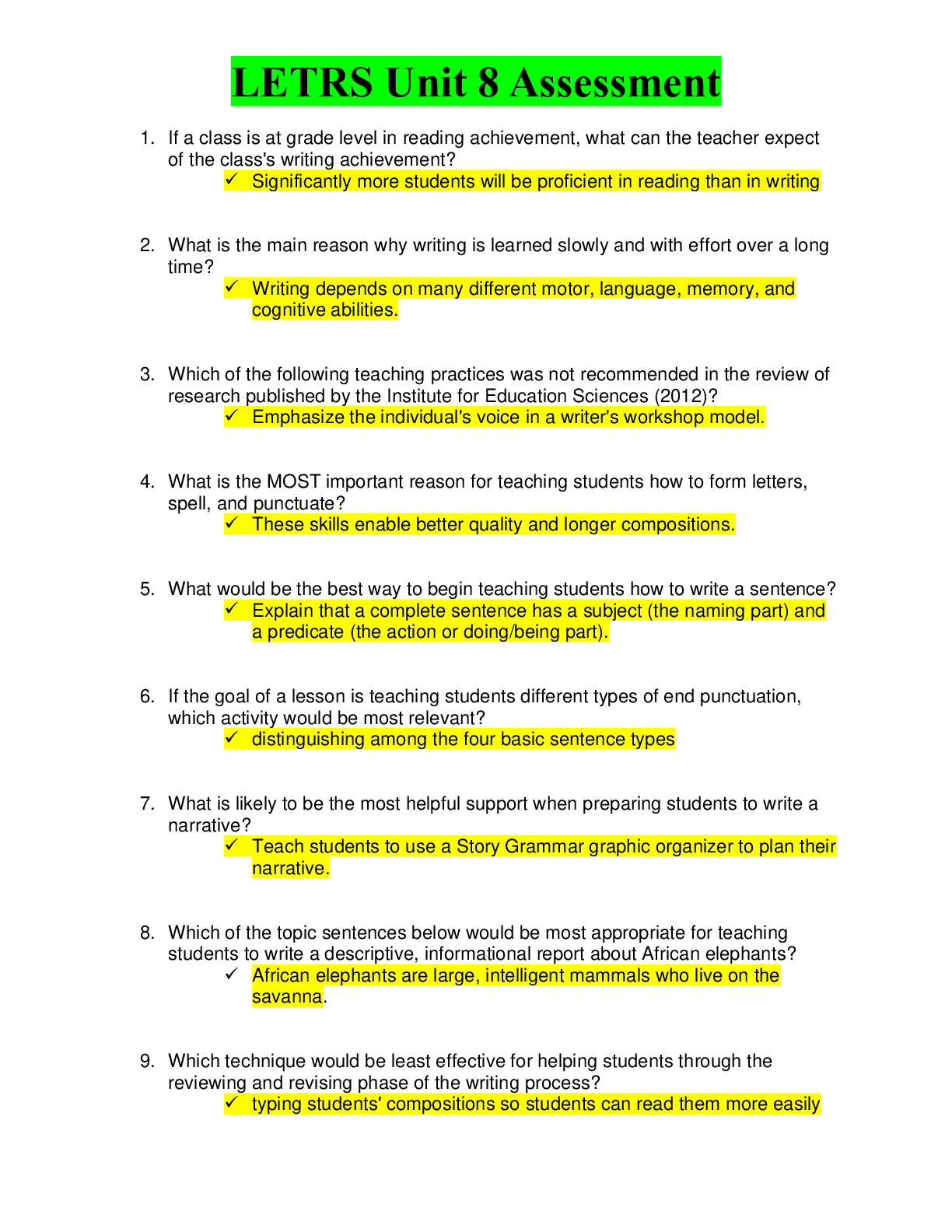
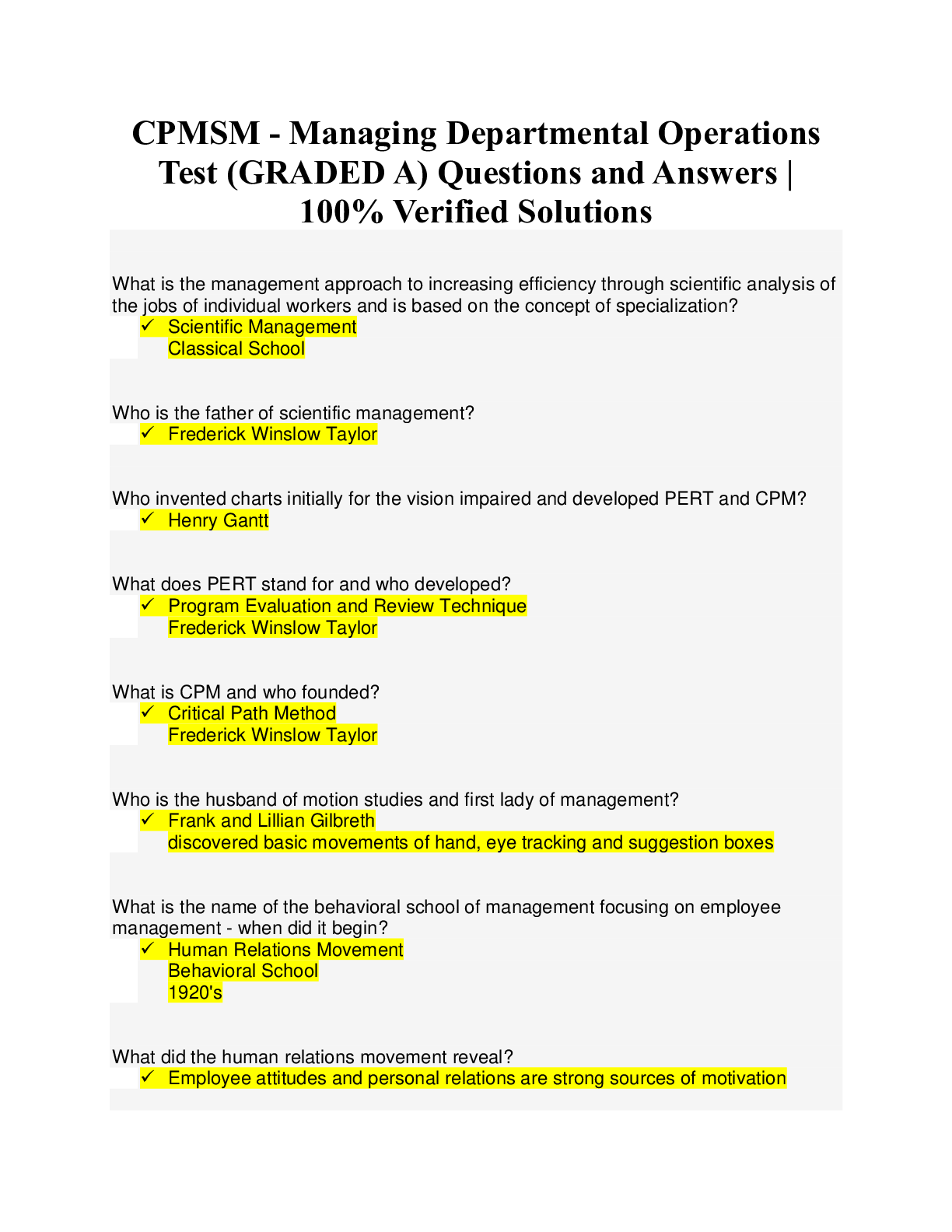
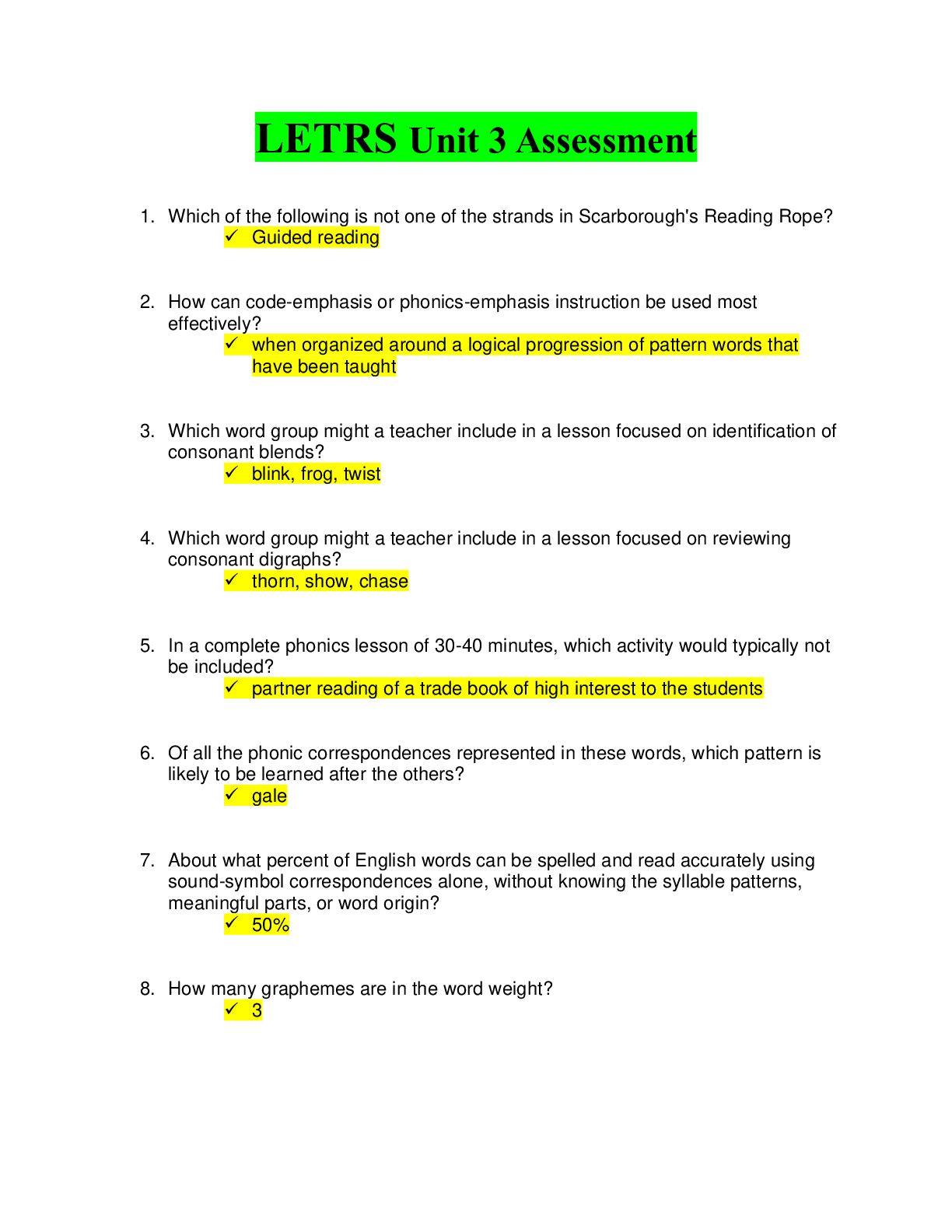

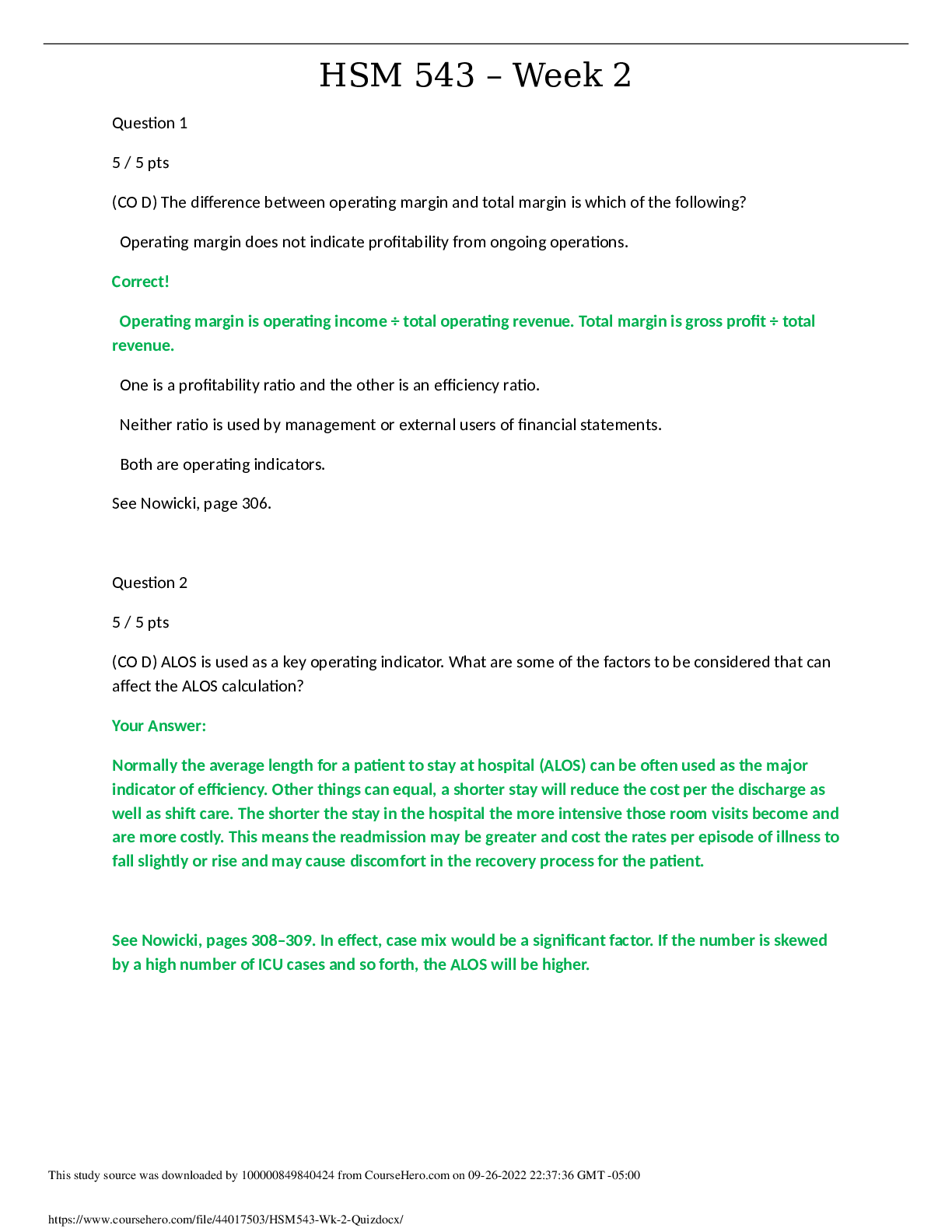
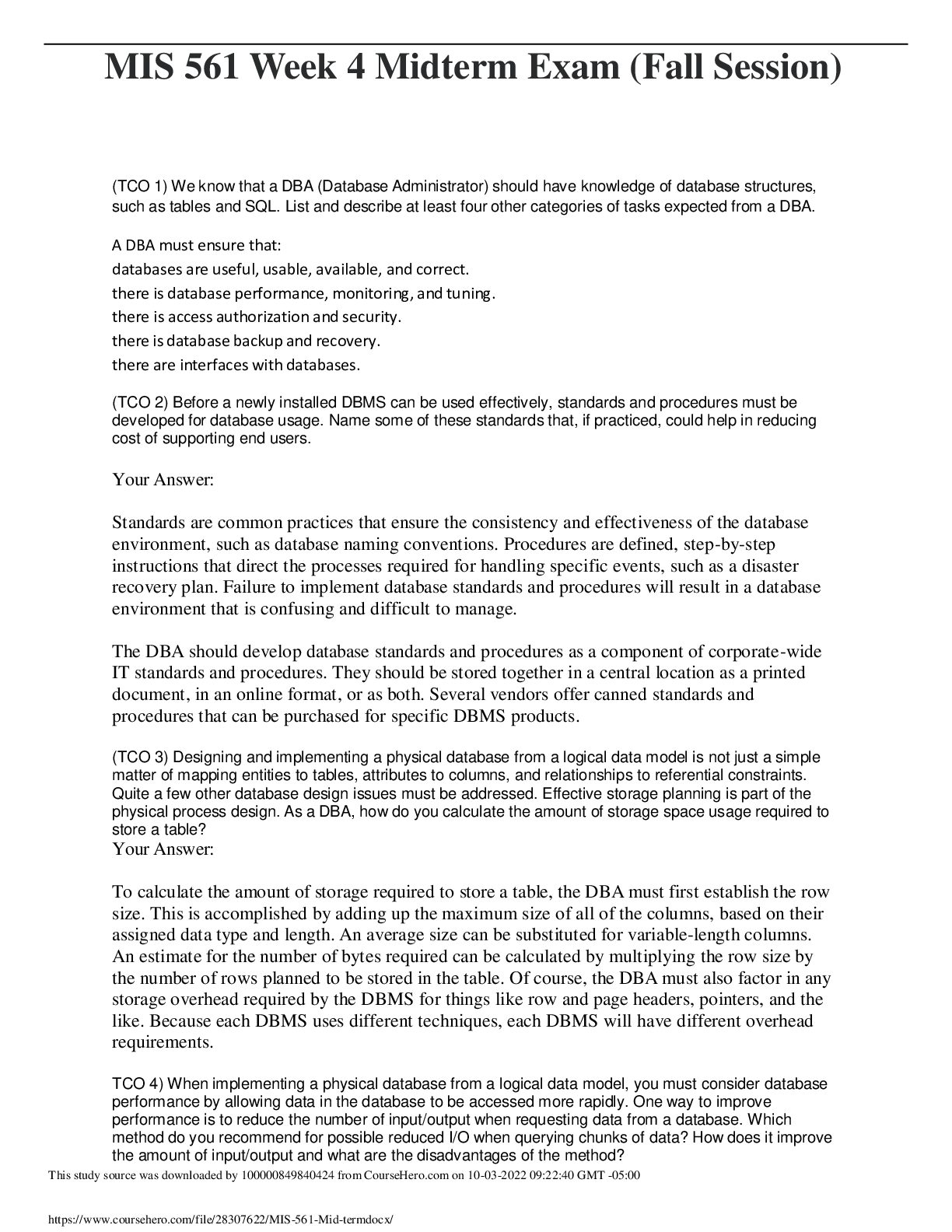
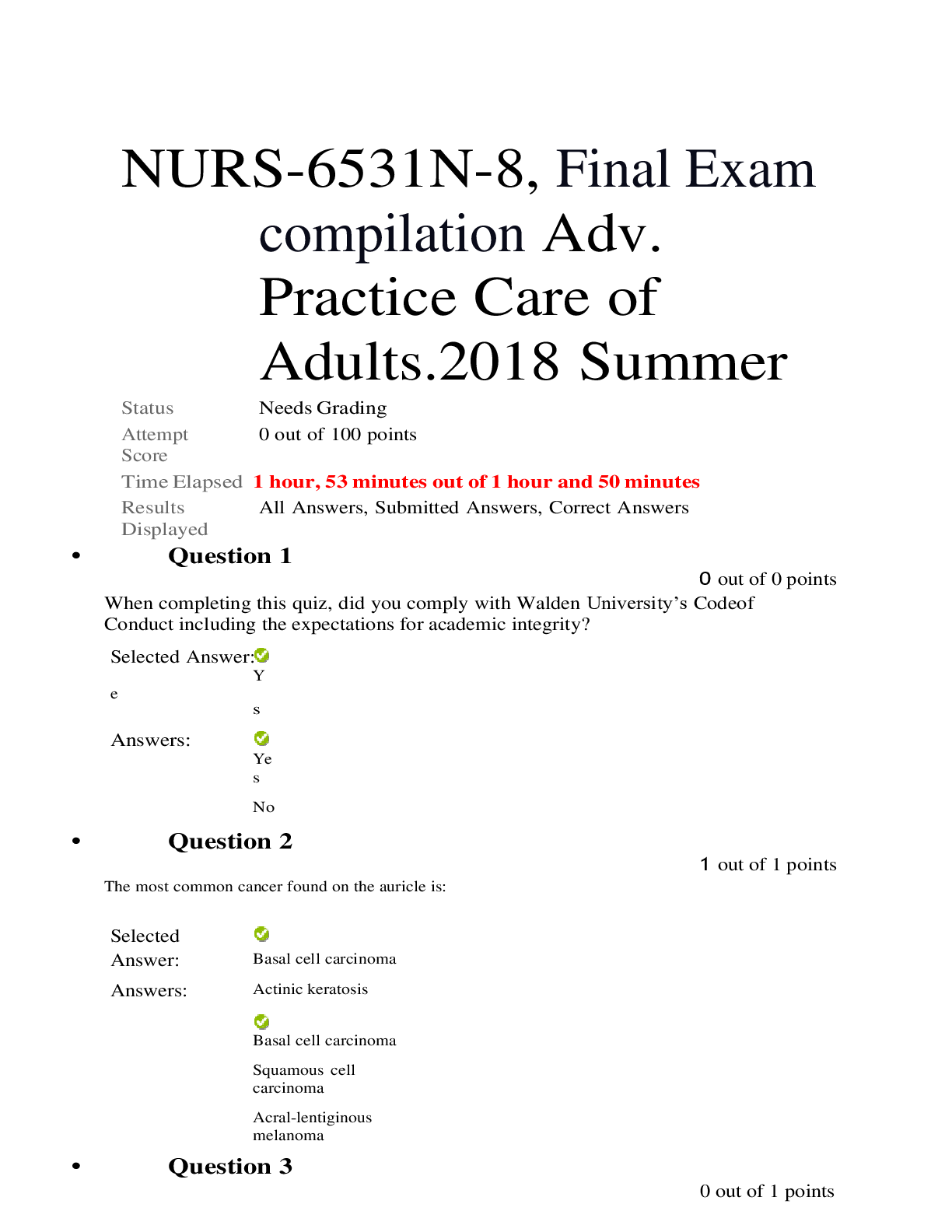
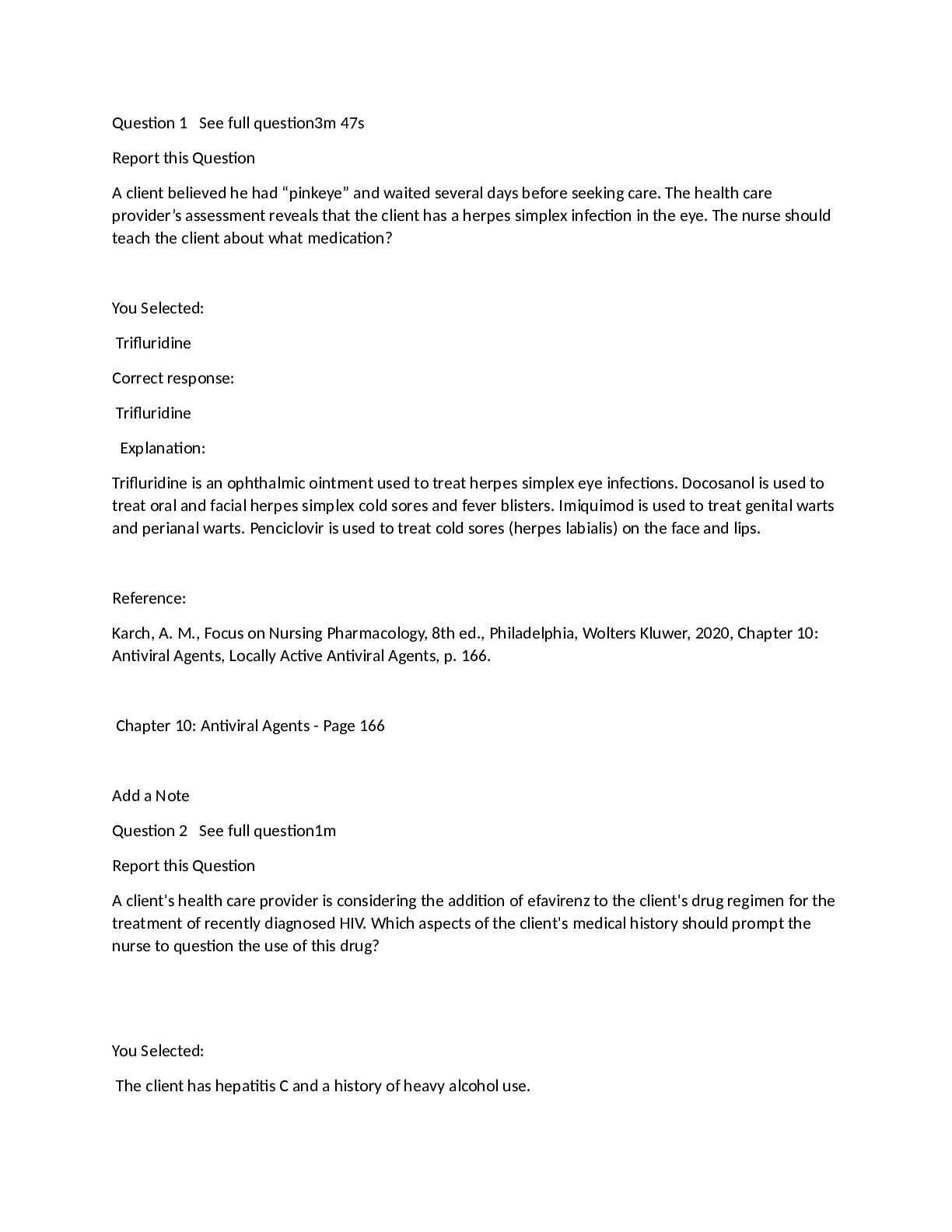
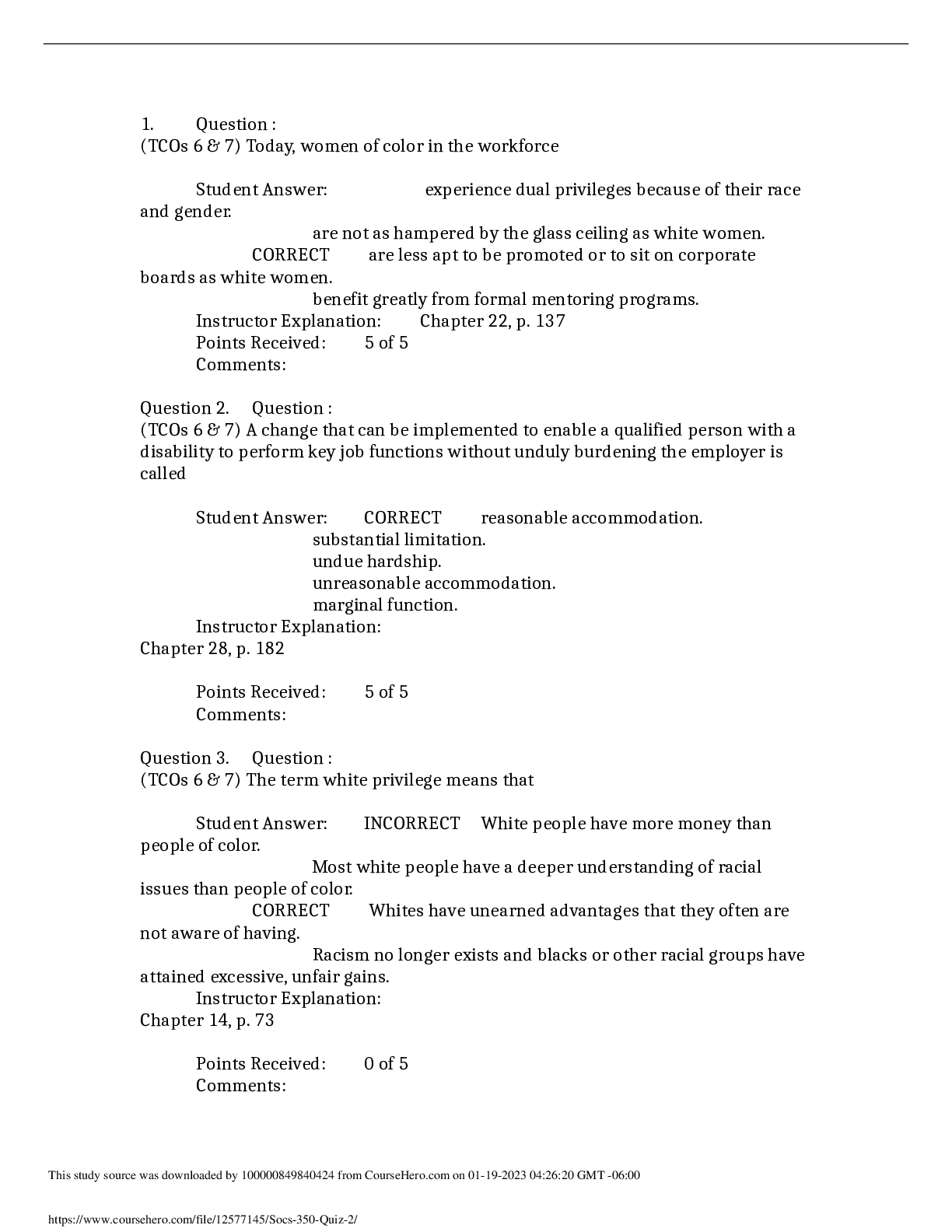
 (1).png)
